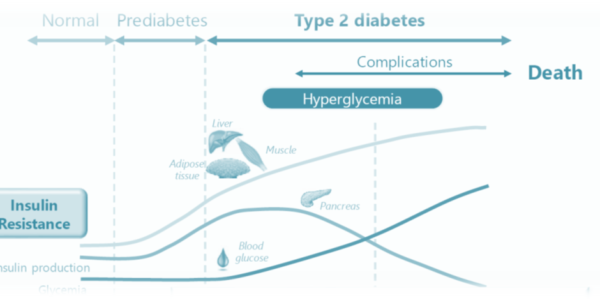THAC, The Healthy Aging Company, is a French and US-based privately-owned biopharmaceutical company which has the ambition to develop a range of first-in-class drug candidates targeting T2DM and its complications.
THAC aims to change the way patient care and healthy aging are addressed. THAC is primarily focused on Type 2 Diabetes Mellitus, a chronic disease with still unmet medical needs, as claimed by health agencies.
♦ Its pipeline could lead to potential real game changers for patient care and disease management. THAC is primarily focused on Type 2 Diabetes Mellitus, a condition with still unmet medical needs.
♦ THAC envisions that by fighting insulin resistance, the root cause of T2DM, major breakthrough could be achieved for the treatment of T2DM and the prevention of severe related complications such as peripheral neuropathy (e.g. diabetic foot wounds, amputations).
♦ THAC drug candidates have a unique and innovative mechanism of action that targets oxidation and inflammation, which restores the composition of microbiota, and the insulin sensitivity.
♦ THAC drug candidates are intended to delay disease progression, improve patient’s quality of life, delay premature death and prevent T2DM complications ; peripheral neuropathy is a severe complication for which there is no treatment available; e.g., diabetic foot wounds and amputations.


The insulin produced by the beta cells of the pancreas, circulates in the blood and binds the insulin receptor at the surface of the cells of the body organs. This binding induces intracellular signalling pathways which acts on the GLUT4 glucose receptor. This receptor is then activates and induces the glucose uptake in the cell, which leads to cell metabolism and energy production. As a consequence, the concentration of the glucose, which is consommated by the cells, is lowering in the blood. The organism is healthy.

♦ Aging is a natural process characterized by many cellular and molecular changes including inflammation and oxidative stress. Though physiological, these asymptomatic changes eventually lead to the development of insulin-resistance, a major risk factor for age-related diseases. Inactivity, overnutrition, dysbiosis of the microbiota and to a lesser extent genetics are to add to aging as the main drivers for inflammation and oxidative stress (through the production of reactive oxygen species-ROS).
♦ Local inflammation and oxidation of the extracellular matrix, in organs, leads to intracellular signals which « inactivate » the insulin receptor. The cells become insulin resistant and glucose uptake by the cells are impaired. These latter lead to insulin resistance by enhancing hyperglycaemia and hyperinsulinemia.
♦Insulin resistance is common to many age-related diseases and T2DM complications, acting at the level of different organs of the human body.
Insulin is responsible of the glucose homestoasis in the human body
Insulin is a hormone that lowers the level of glucose (a type of sugar) in the blood. It’s made by the beta cells of the pancreas and released into the blood when the glucose level goes up, such as after eating. Insulin helps glucose enter the body’s cells, where it can be used for energy or stored for future use.
In diabetes, the pancreas doesn’t make enough insulin or the body can’t respond normally to the insulin that is made. This causes the glucose level in the blood to rise.
In T2DM, the body can’t respond normally to the insulin that is made, since a resistance against insulin appears with age. The insulin is no more « fonctional » or « active » leading to the accomulation of glucose in the blood.
A relationship betwwen the gut microbiota and the appearance of insulin resistance in T2DM is demonstrated and published.
Type 2 Mellitus Diabetes (T2DM) is a still major unmet medical need claimed by the World Health Organization (WHO), American and European Diabetes Associations and other influential academic societies.

During aging, insulin resistance appears and increases. Insulin is not more « efficient » to capture the glucose in the cells. As a result, the pancreas overexpress insulin in the body during a period of time before being decreasing the insulin production. The consequence of insulin resistance and decrease of insulin production is the decrease of the glucose uptake by the cells and the accumulation of the glucose in the blood. The glycemia increases in the body, T2DM is installed and evolves within time, with the appearance of severe complications, up to the pre-mature death.

ALF-5755, the active ingredient of THAC drug candidates fights insulin resistance thanks to a unique and innovative pleiotropic mechanism of action.
♦ ALF-5755 acts on the extracellular matrixes when and where this is inflammation and oxidation (due to aging for example). The protein binds the fibrin filaments of the extracellular matrix and induces a local anti-inflammation and ROS-scavenger activity.
♦ These activities induced intracellular signaling pathways which activates the receptor of insulin at the surface of the local cells. The binding of insulin to its receptor is leading to the activation of the glucose receptor at the surface of the cell, and to glucose uptake in the cells.
♦ ALF-5755 has also a direct action on microbiota by restoring its composition through its anti-inflammatory and ROS-scavenger activites.

